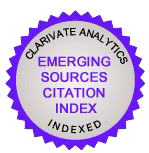The Challenges of Contrasting Interactional Lexical Layers of Slavic Cultural Identities
Ключевые слова:
Russian, Serbian, loanwords, lexical interaction, cultural identityАннотация
The present paper points to the challenges in contrasting interactional lexical layers of Slavic languages using the datasets of Slavic loanword dictionaries. Three main challenges comprise sampling bias, language labeling bias, and field labeling bias. In order to partially mitigate these challenges, the author proposes the deployment of the generality index, metalanguage presence index, metafield presence index, and metafield profiling index. All these indices measure quantities relative to one another at one or more metalevels, which partially eliminates the challenges stemming from the tendency of the dictionary compilers to follow different strategies in selecting materials, and labeling languages and fields. The deployment of the proposed indices was demonstrated in contrasting Klajn and Šipka (2006), a Serbian (de facto Serbo-Croatian) loanword dictionary with Egorova (2014), a Russian loanword dictionary. The analysis has demonstrated the usefulness of the indices in confirming that the general structure of the loanwords is in large part shared between the two languages (despite superficial differences) and that some minor differences stem from different socio-historical circumstances of the two languages. It is important to realize that the solutions proposed in this paper only partially mitigate the challenges of working with the existing datasets. A durable solution would be the development of the guidelines for Slavic dictionaries of this kind. Contrasting two dictionaries compiled using the same set of guidelines would enable much less limited exploration of differences and similarities at all levels.Скачивания
Загрузки
Опубликован
Как цитировать
Выпуск
Раздел
Лицензия
Los autores conservan los derechos de autor sobre sus trabajos y garantizan a la revista el derecho de ser la primera publicación del mismo. Los artículos se publican bajo la licencia Creative Commons Atribución-NoComercial 4.0 Internacional (CC BY-NC-SA 4.0), lo que permite a los lectores y otros investigadores copiar, redistribuir, remezclar, transformar y construir a partir del material, siempre que se respeten las condiciones establecidas.












